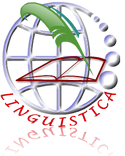Illocutionary Force in The Novel Darkest Hour By Cleo Virginia Andrews
DOI:
https://doi.org/10.24114/jalu.v2i3.938Abstract
ABSTRACT One aim of this article is to show through concrete examples about how Illocutionary Force used in Novel Darkest Hour By Cleo Virginia Andrews. The research are to describe the six types of illocutionary force in Cleo Virginia Andrews™s Darkest Hour to derive the most dominant type of illocutionary force, to explain the meaning of illocutionary force and to analyze the implication of that dominant the six types of illocutionary force to the novel itself. This study applied descriptive qualitative method. They were taken randomly and found 108 the types of illocutionary force; Asserting (21,29 %), Promising (13,89 %), Excomunicating ( 12,04%), Exclaiming in pain (15,74 %), Inquiring (11,11 %), and Ordering (25,92%) occurs in the novel. It was found that the most dominant type of illocutionary force that is used in Cleo Virginia Andrews™s Darkest Hour is Ordering for expressing what the speaker wants (25,92%). This implies that the Ordering for expressing what the speaker wants play a great role in the novel. It means that wishes as expression of speaker™s desire or wants in order to expect it becomes a reality can be characteristic of the novel in case of applying order to express of Illocutionary Force within utterances. Keywords: Illocutionary Force, Novel Darkest Hour By Cleo Virginia Andrews, documentary, descriptive qualitativeDownloads
Issue
Section
Articles
License
Copyright (c) 1970 Wilda Mahya Sari, Lidiman Sahat Martua Sinaga

This work is licensed under a Creative Commons Attribution-ShareAlike 4.0 International License.
Authors who publish with this journal agree to the following terms:
- Authors retain copyright and grant the journal the right of first publication with the work simultaneously licensed under a Creative Commons Attribution License that allows others to share the work with an acknowledgment of the work's authorship and initial publication in this journal.
- Authors are able to enter into separate, additional contractual arrangements for the non-exclusive distribution of the journal's published version of the work (e.g., post it to an institutional repository or publish it in a book), with an acknowledgment of its initial publication in this journal.
- Authors are permitted and encouraged to post their work online (e.g., in institutional repositories or on their website) prior to and during the submission process, as it can lead to productive exchanges, as well as earlier and greater citation of published work (See The Effect of Open Access).
- This work is licensed under a Creative Commons Attribution-ShareAlike 4.0 International License.

